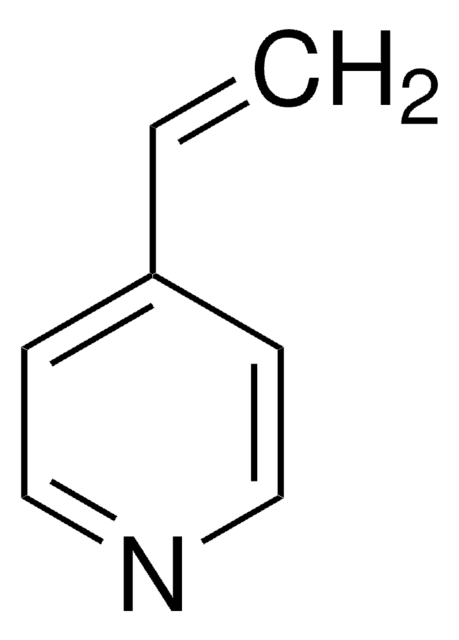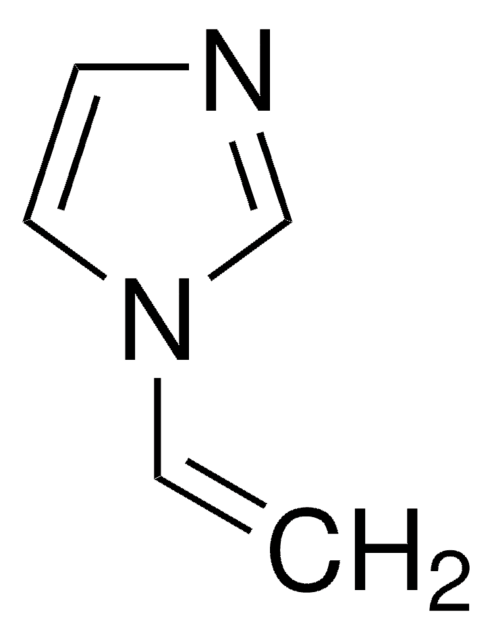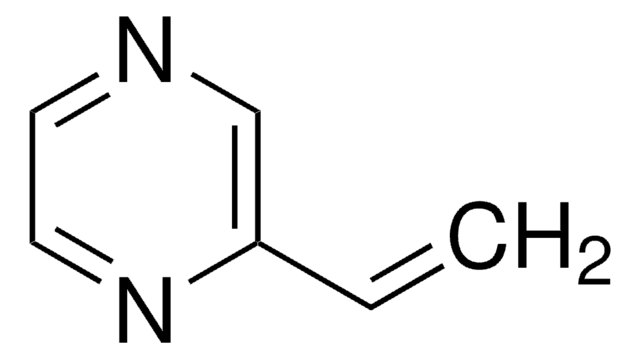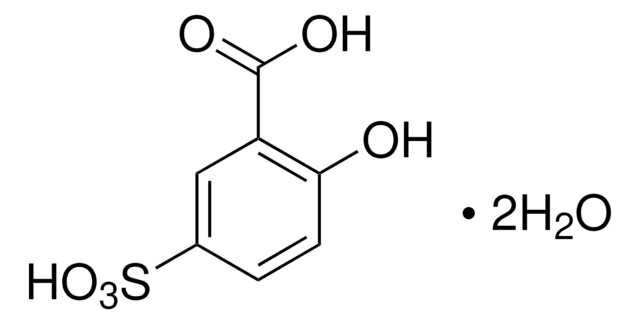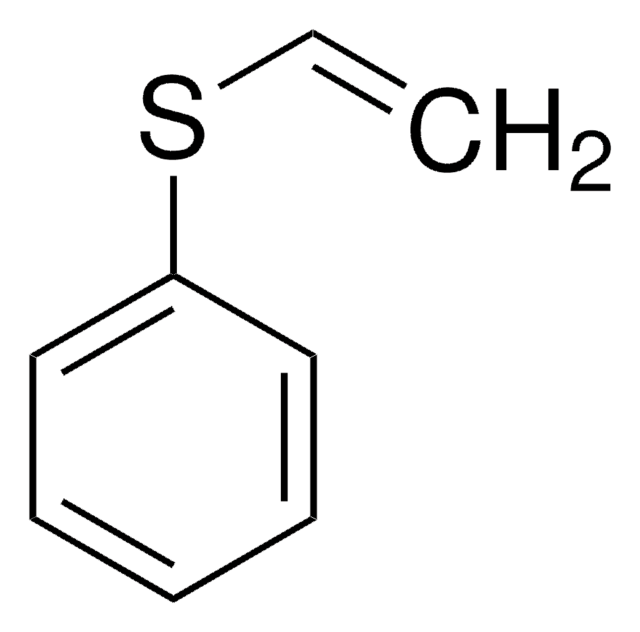132292
2-Vinylpyridine
97%
Sinônimo(s):
α-Vinylpyridine, 2-Ethenylpyridine, 2-Pyridylethylene
About This Item
Produtos recomendados
pressão de vapor
10 mmHg ( 44.5 °C)
Nível de qualidade
Ensaio
97%
Formulário
liquid
contém
0.1 wt. % p-tert-butylcatechol as inhibitor
índice de refração
n20/D 1.549 (lit.)
p.e.
79-82 °C/29 mmHg (lit.)
densidade
0.975 g/mL at 25 °C (lit.)
temperatura de armazenamento
−20°C
cadeia de caracteres SMILES
C=Cc1ccccn1
InChI
1S/C7H7N/c1-2-7-5-3-4-6-8-7/h2-6H,1H2
chave InChI
KGIGUEBEKRSTEW-UHFFFAOYSA-N
Procurando produtos similares? Visita Guia de comparação de produtos
Categorias relacionadas
Descrição geral
2-Vinylpyridine (2VP) is a water soluble pyridine derivative that can be used in the synthesis of poly(2-vinylpyridine) (P2VP) by anionic polymerization. It can be industrially prepared by treatment of 2-methylpyridine with an aqueous solution of formaldehyde in a temperature range of 150-200°C.
Aplicação
- In the preparation of P2VP oligomers to study their properties and behavior on various surfaces, with a focus on area-selective deposition techniques.
- To synthesize pH-responsive thin film membranes, which can be used for various applications, such as separation, filtration, and catalysis.
- To synthesize degradable block copolymer-derived nanoporous membranes, which have potential applications in various fields, including energy-related catalysis and nanoparticle synthesis.
- To improve the effectiveness of protective polymer coatings on metals.
Palavra indicadora
Danger
Frases de perigo
Declarações de precaução
Classificações de perigo
Acute Tox. 3 Dermal - Acute Tox. 4 Oral - Aquatic Chronic 2 - Eye Dam. 1 - Flam. Liq. 3 - Skin Corr. 1B - Skin Sens. 1
Perigos de suplementos
Código de classe de armazenamento
3 - Flammable liquids
Classe de risco de água (WGK)
WGK 3
Ponto de fulgor (°F)
122.0 °F - closed cup
Ponto de fulgor (°C)
50 °C - closed cup
Equipamento de proteção individual
Faceshields, Gloves, Goggles, type ABEK (EN14387) respirator filter
Escolha uma das versões mais recentes:
Já possui este produto?
Encontre a documentação dos produtos que você adquiriu recentemente na biblioteca de documentos.
Os clientes também visualizaram
Global Trade Item Number
| SKU | GTIN |
|---|---|
| 132292-100ML | 4061837836251 |
| 132292-500ML | 4061838728920 |
| 132292-5ML | 4061837836268 |
Nossa equipe de cientistas tem experiência em todas as áreas de pesquisa, incluindo Life Sciences, ciência de materiais, síntese química, cromatografia, química analítica e muitas outras.
Entre em contato com a assistência técnica